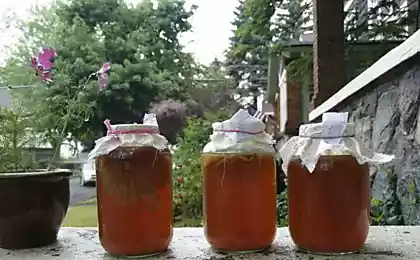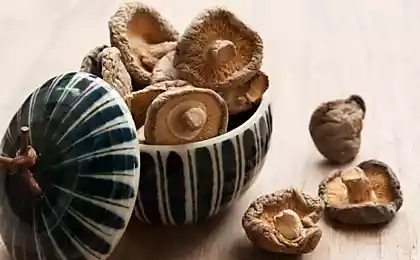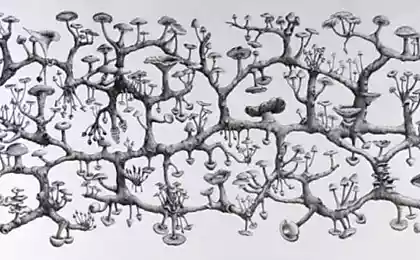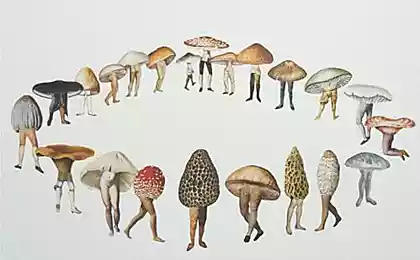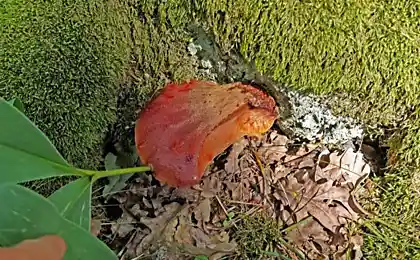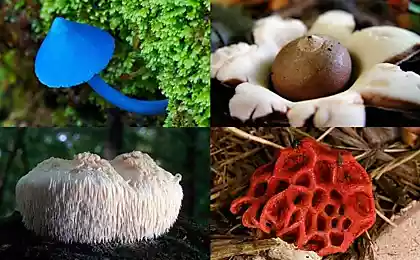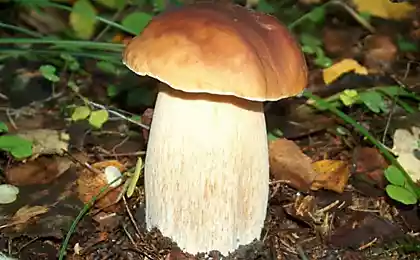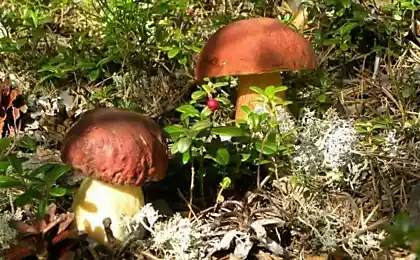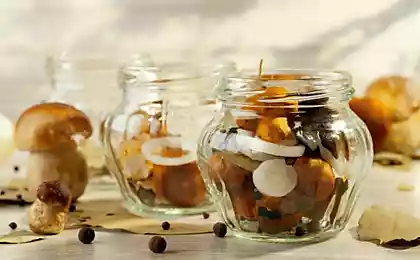10583
The most beautiful mushrooms in the world
Look at the most beautiful and amazing mushrooms that exist on our planet.

Lactarius indigo (Lactarius indigo). Fairly common type of fungus grows in eastern North America, East Asia and Central America. It grows on the ground in deciduous and coniferous forests. The color varies from dark blue in fresh mushrooms until pale blue-gray of old. Milk, which distinguishes the fungus if it is cut or broken, too blue. Cap is 5-15 cm, leg - 2.8 cm in height and 1-2, 5 cm in thickness. Edible mushroom and sold in rural markets in Mexico, Guatemala and China.
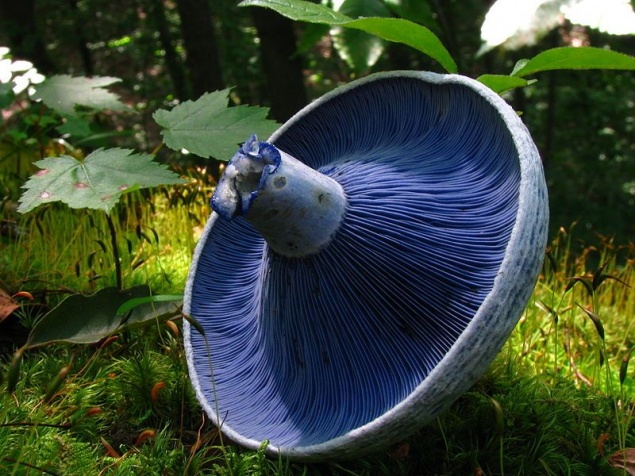
Panellus kind Panellus stipticus. Common type grows in Asia, Australia, Europe and North America. Growing groups on logs, stumps and trunks of deciduous trees, especially on oaks, beeches and birches. This is one of the bioluminescent species of fungi, although fungi of this species from the Pacific North America, no.

Tremella mesenterica (Tremella mesenterica). This fungus often grows on dead trees, but also to the newly fallen branches. Gelatinous orange-yellow mushroom body (7, 5 cm in diameter) has a winding surface which in the rain becomes sticky and slippery. The fungus grows in the cracks of the bark, appearing in the rain. A few days after the rain it dries and turns into a thin film or a wrinkled mass, able to reinstate after the rain. This fungus is commonly found in mixed forests and distributed in temperate and tropical regions, including Africa, Asia, Australia, Europe, North and South America. Mushroom is edible, although it is considered tasteless. This fungus produces carbohydrates, which are valuable for research.
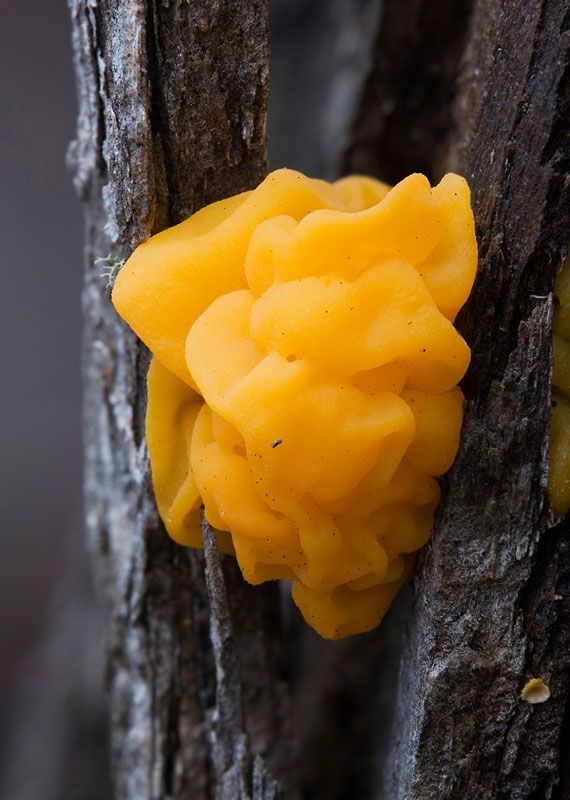
Rhodotus (Rhodotus palmatus). This fungus - the only representative of the genus in the family Physalacriaceae. Not very common. Mushroom collected in eastern North America, North Africa, Europe and Asia. In Europe, the number of fungi is rapidly falling, so Rhodotus made in the Red Book. Usually grows on stumps and rotting logs solid wood. Mature mushrooms differ pinkish color and the characteristic "venoobraznoy" surface.
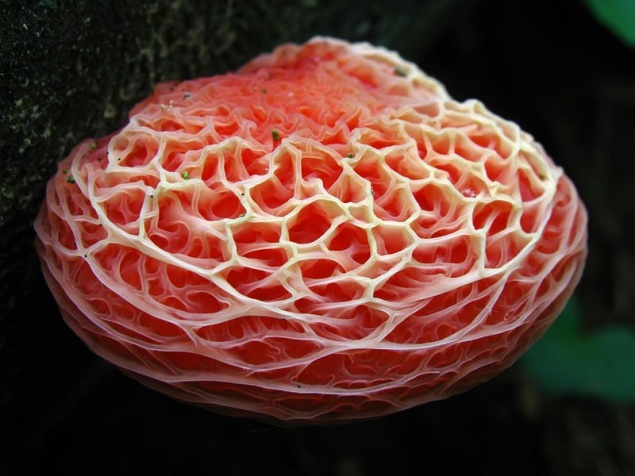
Clavaria zollingeri (Clavaria zollingeri). Widespread species of fungi. It has a tube-shaped purple or pinkish-lilac body, growing to 10 inches tall and 7 inches wide. The tips of the brittle and thin branches usually rounded and brownish. This saprobity kind of mushrooms, it absorbs nutrients, organic matter breaking down. Usually grows on the ground.
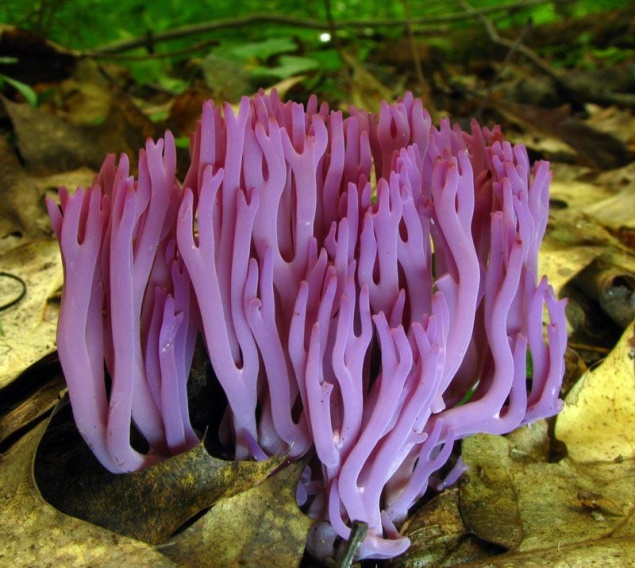
Geastrum bag-shaped (Geastrum saccatum). It grows in North America and Europe on rotting trees. Mushroom pickers consider it inedible because of its taste slides. Fairly common type, peak picking occurs at the end of the summer. It is believed that the hole in the outer layer of the body has a star-shaped fungus of calcium oxalate crystals collection before the opening. In Brazil, the fungus is called "Star of the earth».
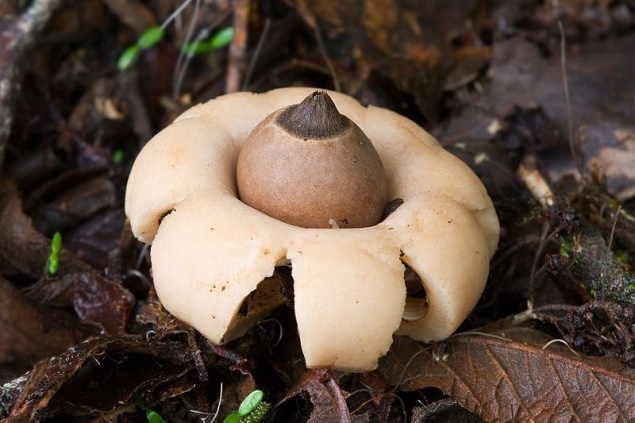
Polyporus squamosus (Polyporus squamosus). Widespread species of the fungus grows in North America, Australia, Asia and Europe. It causes a white rot on the hardwood. Alternative name of the fungus - Dryads Saddle - refers to Greek mythology and dryads who allegedly could ride on these mushrooms.
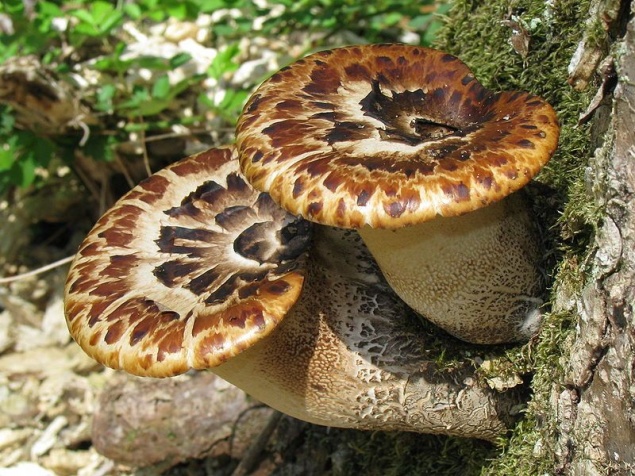
Aseroe rubra. The so-called sea anemone is widespread and recognizable due to its unpleasant smell of rot and starfish-shaped. Growing in the gardens on the forest floor and in grassy areas, reminiscent of a red star, covered with brownish mucus, and has a white foot. Attracts flies.
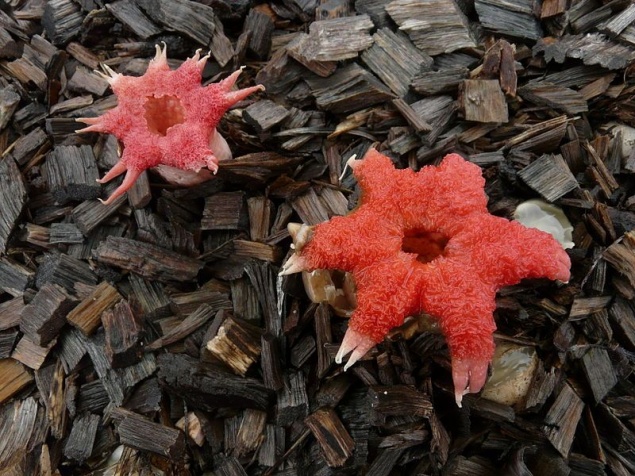
Coral mushroom (Clavulinopsis corallinorosacea). The fungus is called so because of the similarity with sea corals. These mushrooms have a bright color, mainly orange, yellow or red. Usually they grow older lesah.odni coral mushrooms saprotrophic and other symbiotic or even parasitic.
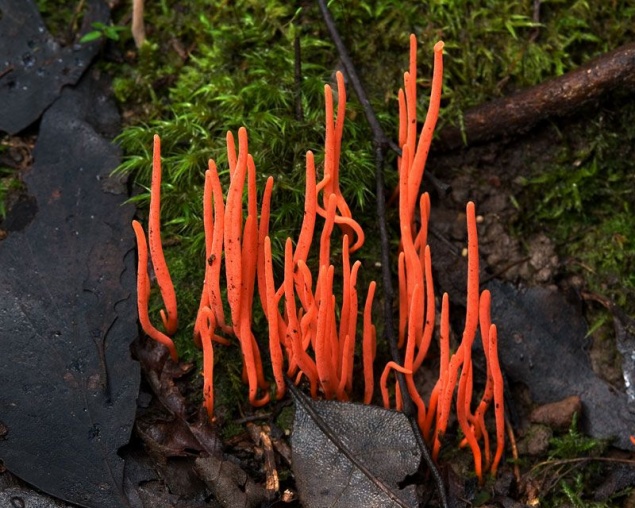
Brown raincoat (Lycoperdon umbrinum). This type of fungus grows in China, Europe and North America. These mushrooms are not open caps with spores. Instead disputes appear inside the body of the ball. Maturing spores form Gleb in the center of the body, which has a distinctive color and texture.
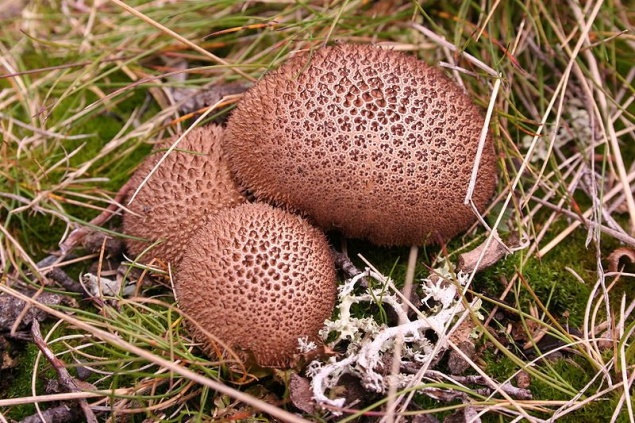
Amanita caesarea (Amanita caesarea). Very valuable edible mushroom that grows in southern Europe and North America. For the first time this fungus described Giovanni Antonio Scopoli in 1772. He was very fond of the rulers of the Roman Empire. He has a distinctive orange cap, yellow spore-bearing plate and the leg. This fungus is very much appreciated by the Romans, who called it Boletus.
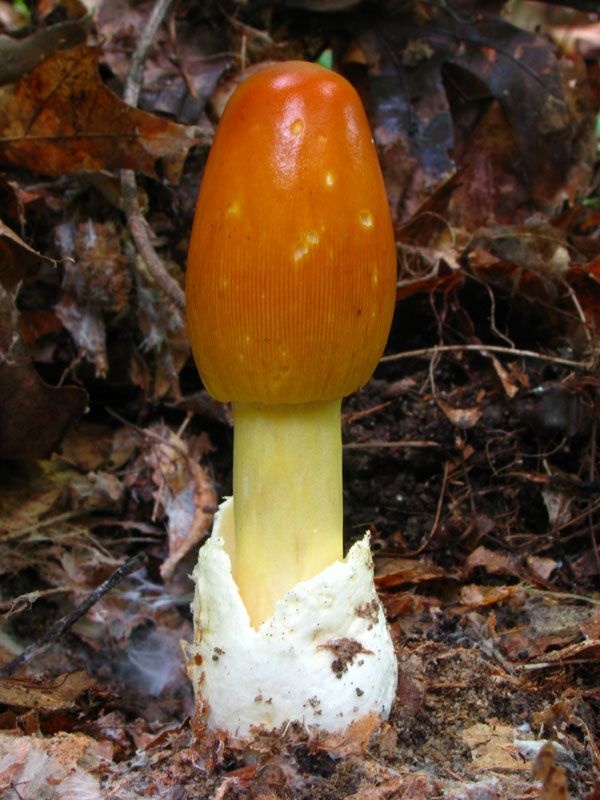
Mycena interrupta. This mushroom grows in Australia, New Zealand, Chile and New Caledonia. In Australia, growing in Victoria, Tasmania, New South Wales and South Australia, and Queensland, but only at The National Park Lamington. Pileus is 0, 6-2 cm, and they have a bright blue color. When they appear, they have a spherical shape, but as they mature become wider. Hats sticky and slimy in appearance, especially in the rain.
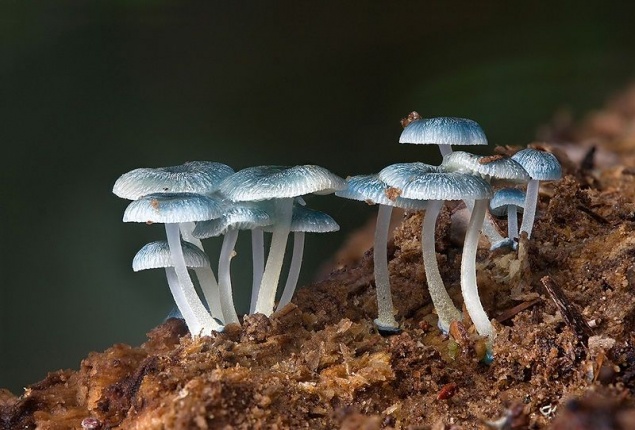
Xanthoria elegans (Xanthoria elegans). This fungus grows on the rocks, often near the bird perches or mink rodents. By the nature of this lichen. He became one of the first lichens, which are used in the method of dating rock surfaces, known as lihenometriya. Growing at a rate of 0, 5 mm per year during the first century, and then its growth slows down a bit.
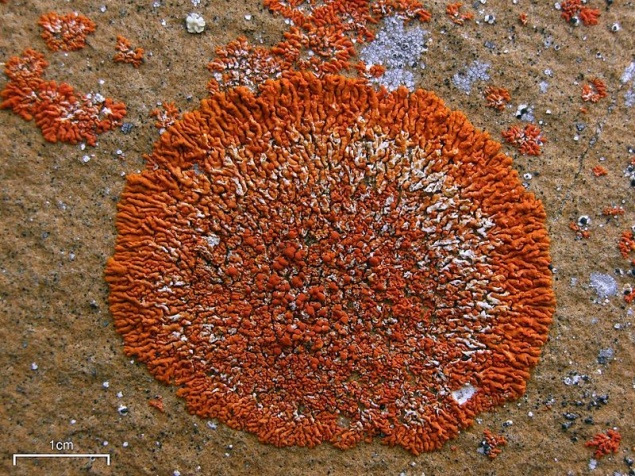
Morchella conica (Morchella conica). Edible mushroom in the upper part resembling a honeycomb. It consists of an entire network of undulated strips with voids therebetween. Very appreciated by gourmets, especially in French cuisine. The fungus is very popular among mushroom pickers, not only from a commercial point of view, but also because of the pleasant taste.
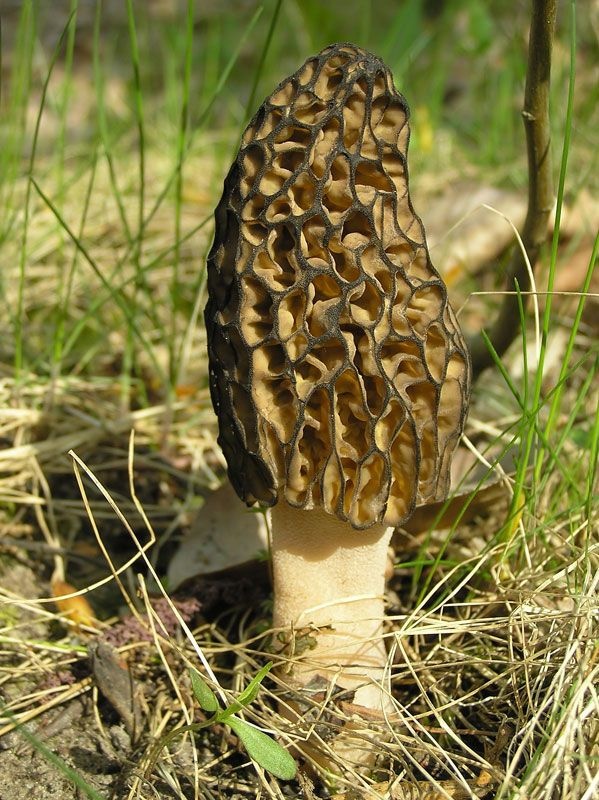
Amanita (Amanita muscaria). Well-known mushroom - a poisonous and psychoactive basidiomycete fungus. It grows in the northern hemisphere, but also was introduced in the country's southern hemisphere, first as a symbiont in coniferous forests, and then as a full species. Red cap with white dots - who do not know the mushroom? This is one of the most recognizable of fungi in the world. Although considered a poisonous mushroom, Amanita muscaria confirmed cases of poisoning is not, and in some parts of Europe, Asia and North America, and it does eat after blanching. Amanita has hallucinogenic properties, its main psychoactive component - is muscimol. Some peoples of Siberia use it as an entheogen, and it has great religious significance in these cultures.
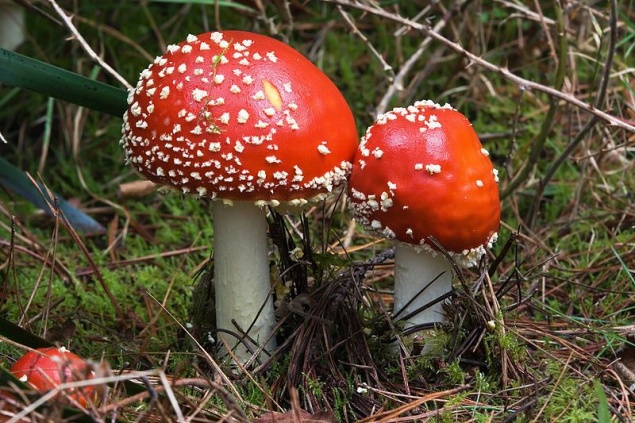
Source: bigpicture.ru

Lactarius indigo (Lactarius indigo). Fairly common type of fungus grows in eastern North America, East Asia and Central America. It grows on the ground in deciduous and coniferous forests. The color varies from dark blue in fresh mushrooms until pale blue-gray of old. Milk, which distinguishes the fungus if it is cut or broken, too blue. Cap is 5-15 cm, leg - 2.8 cm in height and 1-2, 5 cm in thickness. Edible mushroom and sold in rural markets in Mexico, Guatemala and China.

Panellus kind Panellus stipticus. Common type grows in Asia, Australia, Europe and North America. Growing groups on logs, stumps and trunks of deciduous trees, especially on oaks, beeches and birches. This is one of the bioluminescent species of fungi, although fungi of this species from the Pacific North America, no.

Tremella mesenterica (Tremella mesenterica). This fungus often grows on dead trees, but also to the newly fallen branches. Gelatinous orange-yellow mushroom body (7, 5 cm in diameter) has a winding surface which in the rain becomes sticky and slippery. The fungus grows in the cracks of the bark, appearing in the rain. A few days after the rain it dries and turns into a thin film or a wrinkled mass, able to reinstate after the rain. This fungus is commonly found in mixed forests and distributed in temperate and tropical regions, including Africa, Asia, Australia, Europe, North and South America. Mushroom is edible, although it is considered tasteless. This fungus produces carbohydrates, which are valuable for research.

Rhodotus (Rhodotus palmatus). This fungus - the only representative of the genus in the family Physalacriaceae. Not very common. Mushroom collected in eastern North America, North Africa, Europe and Asia. In Europe, the number of fungi is rapidly falling, so Rhodotus made in the Red Book. Usually grows on stumps and rotting logs solid wood. Mature mushrooms differ pinkish color and the characteristic "venoobraznoy" surface.

Clavaria zollingeri (Clavaria zollingeri). Widespread species of fungi. It has a tube-shaped purple or pinkish-lilac body, growing to 10 inches tall and 7 inches wide. The tips of the brittle and thin branches usually rounded and brownish. This saprobity kind of mushrooms, it absorbs nutrients, organic matter breaking down. Usually grows on the ground.

Geastrum bag-shaped (Geastrum saccatum). It grows in North America and Europe on rotting trees. Mushroom pickers consider it inedible because of its taste slides. Fairly common type, peak picking occurs at the end of the summer. It is believed that the hole in the outer layer of the body has a star-shaped fungus of calcium oxalate crystals collection before the opening. In Brazil, the fungus is called "Star of the earth».

Polyporus squamosus (Polyporus squamosus). Widespread species of the fungus grows in North America, Australia, Asia and Europe. It causes a white rot on the hardwood. Alternative name of the fungus - Dryads Saddle - refers to Greek mythology and dryads who allegedly could ride on these mushrooms.

Aseroe rubra. The so-called sea anemone is widespread and recognizable due to its unpleasant smell of rot and starfish-shaped. Growing in the gardens on the forest floor and in grassy areas, reminiscent of a red star, covered with brownish mucus, and has a white foot. Attracts flies.

Coral mushroom (Clavulinopsis corallinorosacea). The fungus is called so because of the similarity with sea corals. These mushrooms have a bright color, mainly orange, yellow or red. Usually they grow older lesah.odni coral mushrooms saprotrophic and other symbiotic or even parasitic.

Brown raincoat (Lycoperdon umbrinum). This type of fungus grows in China, Europe and North America. These mushrooms are not open caps with spores. Instead disputes appear inside the body of the ball. Maturing spores form Gleb in the center of the body, which has a distinctive color and texture.

Amanita caesarea (Amanita caesarea). Very valuable edible mushroom that grows in southern Europe and North America. For the first time this fungus described Giovanni Antonio Scopoli in 1772. He was very fond of the rulers of the Roman Empire. He has a distinctive orange cap, yellow spore-bearing plate and the leg. This fungus is very much appreciated by the Romans, who called it Boletus.

Mycena interrupta. This mushroom grows in Australia, New Zealand, Chile and New Caledonia. In Australia, growing in Victoria, Tasmania, New South Wales and South Australia, and Queensland, but only at The National Park Lamington. Pileus is 0, 6-2 cm, and they have a bright blue color. When they appear, they have a spherical shape, but as they mature become wider. Hats sticky and slimy in appearance, especially in the rain.

Xanthoria elegans (Xanthoria elegans). This fungus grows on the rocks, often near the bird perches or mink rodents. By the nature of this lichen. He became one of the first lichens, which are used in the method of dating rock surfaces, known as lihenometriya. Growing at a rate of 0, 5 mm per year during the first century, and then its growth slows down a bit.

Morchella conica (Morchella conica). Edible mushroom in the upper part resembling a honeycomb. It consists of an entire network of undulated strips with voids therebetween. Very appreciated by gourmets, especially in French cuisine. The fungus is very popular among mushroom pickers, not only from a commercial point of view, but also because of the pleasant taste.

Amanita (Amanita muscaria). Well-known mushroom - a poisonous and psychoactive basidiomycete fungus. It grows in the northern hemisphere, but also was introduced in the country's southern hemisphere, first as a symbiont in coniferous forests, and then as a full species. Red cap with white dots - who do not know the mushroom? This is one of the most recognizable of fungi in the world. Although considered a poisonous mushroom, Amanita muscaria confirmed cases of poisoning is not, and in some parts of Europe, Asia and North America, and it does eat after blanching. Amanita has hallucinogenic properties, its main psychoactive component - is muscimol. Some peoples of Siberia use it as an entheogen, and it has great religious significance in these cultures.

Source: bigpicture.ru
